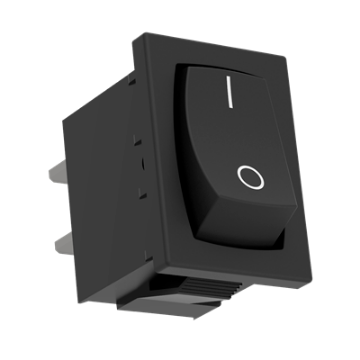Unraveling the Wonders of Switches: The Backbone of Modern Connectivity
In the vast ecosystem of technology, switches stand as unsung heroes, quietly facilitating connections and enabling the seamless flow of data in our interconnected world. From the smallest home network to the sprawling infrastructure of the internet, switches play a pivotal role in directing traffic and ensuring efficient communication. Let’s delve into the intricacies of switches, exploring their types, functionalities, and their indispensable presence in our daily lives. 
Understanding Switches: At its core, a switch is a networking device that connects devices within a local area network (LAN), enabling them to communicate lülitid with each other. Unlike hubs, which simply broadcast data to all connected devices, switches intelligently route data only to its intended recipient. This fundamental distinction makes switches more efficient and scalable for modern networking needs.
Types of Switches: Switches come in various forms to cater to different environments and requirements:
- Unmanaged Switches: These are basic switches that operate out of the box without requiring any configuration. They are ideal for small setups where simplicity is paramount, such as home networks or small offices.
- Managed Switches: Offering advanced features and configuration options, managed switches provide greater control over network traffic. They are commonly deployed in large enterprises and data centers, allowing administrators to optimize performance, implement security protocols, and troubleshoot network issues.
- Layer 2 Switches: Operating at the data link layer of the OSI model, Layer 2 switches use MAC addresses to forward data within a LAN. They are efficient for local traffic management but lack the advanced features of higher-layer switches.
- Layer 3 Switches (Routing Switches): Combining the functionalities of switches and routers, Layer 3 switches can route data based on IP addresses, offering enhanced scalability and network segmentation capabilities. They are often used in complex networks to improve performance and security.
Key Features and Functionality: Switches boast a plethora of features designed to optimize network performance and enhance security:
- Port-based VLANs: Virtual LANs allow networks to be segmented logically, improving efficiency and security by isolating traffic.
- Quality of Service (QoS): QoS mechanisms prioritize certain types of traffic, ensuring critical applications receive sufficient bandwidth and latency-sensitive tasks are handled with priority.
- Spanning Tree Protocol (STP): STP prevents network loops by dynamically disabling redundant paths, ensuring a stable and loop-free topology.
- Port Mirroring: This feature allows administrators to monitor network traffic for troubleshooting, analysis, and security purposes by mirroring traffic from one port to another.
The Evolution of Switches: Over the years, switches have evolved significantly to keep pace with the ever-expanding demands of modern networking:
- Speed Advancements: From the early days of Ethernet with speeds measured in megabits per second (Mbps), switches now support blazing-fast gigabit (1 Gbps) and 10-gigabit (10 Gbps) speeds, catering to bandwidth-intensive applications.
- Power over Ethernet (PoE): PoE switches can deliver power to connected devices such as IP cameras, VoIP phones, and wireless access points over the Ethernet cable, simplifying installation and reducing cable clutter.
- Cloud-Managed Switches: Leveraging cloud-based management platforms, these switches offer centralized control, monitoring, and configuration from anywhere with an internet connection, streamlining network management tasks.
The Future of Switches: As technology continues to advance, switches will play an increasingly vital role in shaping the future of networking:
- Software-Defined Networking (SDN): SDN decouples the control plane from the data plane, enabling dynamic and centralized network management through software, paving the way for more agile and scalable networks.
- IoT Integration: With the proliferation of IoT devices, switches will need to adapt to handle the massive influx of interconnected devices, ensuring efficient communication and robust security measures.
- AI-driven Networking: Artificial intelligence and machine learning algorithms will revolutionize network management by providing predictive analytics, automated troubleshooting, and proactive security measures.
In conclusion, switches may not always grab the headlines, but their significance in enabling modern connectivity cannot be overstated. From humble beginnings to the forefront of technological innovation, switches continue to underpin the foundation of
Leave a Reply